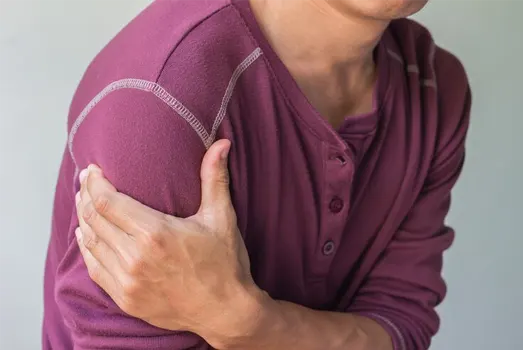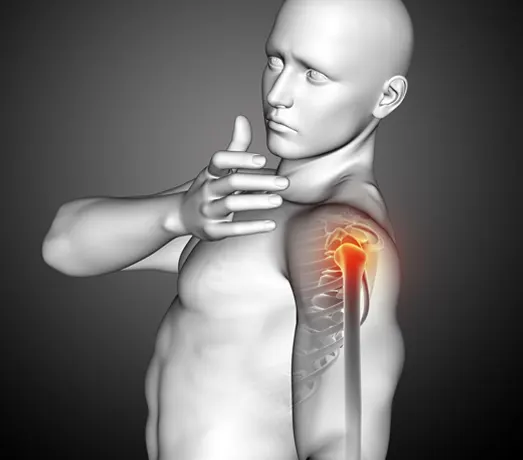
Complete Shoulder Replacement (CSR)
Complete Shoulder Replacement is quite similar in concept to complete knee replacement and complete hip replacement procedures. When arthritis has injured or ruined the shoulder joint, it may be replaced with a metal ball and plastic socket.
However, Shoulder joint replacement surgery is definitely not as frequent as the replacement surgeries undertaken for the knee and hip joints. In fact, in a majority of cases, shoulder joint surgery is often considered as the very last option when nothing else seems to be working. Doctors often insist on trying out non-surgical methods to control the pain and movement of the shoulder joint, which includes medicines and physical/occupational therapy.
The Artificial Shoulder Joint…
The shoulder joint is primarily made up of 3 bones; scapula (the shoulder blade), humerus (the upper arm bone), and clavicle (the collarbone). The upper arm bone or humerus is connected to the shoulder blade with a rotator cuff. The main function of the rotator cuff is to help a person in raising and rotating his arms. When the person raises his arms, it is the rotator cuff which helps in keeping the humerus well settled in the socket.

What necessitates a CSR?
Complete shoulder replacement surgery may remain the only option if the doctor is unable to find ways to control the shoulder pain of his patient, or if the patient finds it extremely painful to use his shoulder for daily tasks. Such a painful situation may necessitate the use of an operative procedure to mend the damage done to the shoulder joint of the patient.
While osteoarthritis and rheumatoid arthritis are known to affect any joint in the person’s body, another condition known as aseptic necrosis is specially known to affect the shoulder joint of a person. In this condition, a fracture resulting in the puncturing of the blood vessels may cause no supply of blood to the joint head. As a result, the affected part of the joint surface becomes lifeless after a certain time. When the humeral head gets affected by this condition, doctors usually have no option but to suggest a shoulder joint replacement surgery. In few cases, the threat of building necrosis is so much that the surgeons may like to replace the humeral head as soon as possible.
Although a cortisone injection into the shoulder joint is known to provide temporary reprieve from pain, but a majority of surgeons only permit 2 to 3 cortisone injections into any joints. And if these injections fail to provide the patient with long-term respite from pain, the ultimate course suggested by Doctors is a surgery.
The Artificial Shoulder Joint…
Mainly there are 2 types of artificial shoulder replacements; a cemented prosthesis and an uncemented prosthesis. While both types of artificial joints are widely used, a surgeon might also consider using a combination of both depending on the condition of the shoulder joint of affected patient.
Just like a natural shoulder joint, an artificial shoulder joint is also made up of 2 parts; the humeral part to be put in place of the humeral head, and the glenoid part to be put in place of the socket of shoulder (which is basically a component of the scapula). The material used in the humeral part is made of metal, while the glenoid component which is actually made up of 2 parts has a metal tray attached straight to the bone, and a plastic cup attached to it which forms the socket.
The Operative Procedure…
There are 2 types of Shoulder replacement surgeries being done these days. The first type of surgery is called Arthroplasty (a term used for joint reconstruction), which is undertaken when cartilage of both humeral heads and the glenoid are worn out completely. In this procedure, both these parts of the shoulder joint are replaced with artificial components.
he second type of surgery is called hemi-Arthroplasty (Hemi means half), and this is undertaken when the glenoid has some articular cartilage left in it. In this scenario, the surgeon only undertakes half replacement of the shoulder joint by only changing the humeral head component. Hemi-Arthroplasty is particularly used in instances when a fractured shoulder has stopped the flow of blood to the humeral head.
